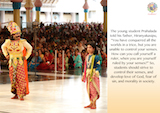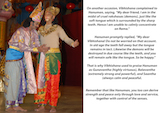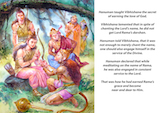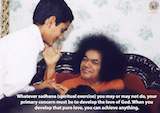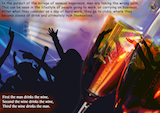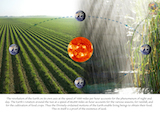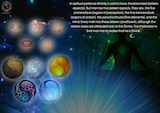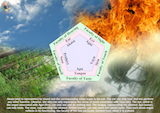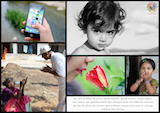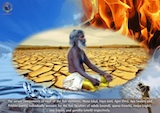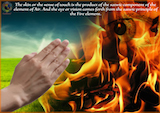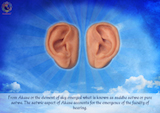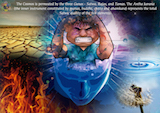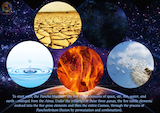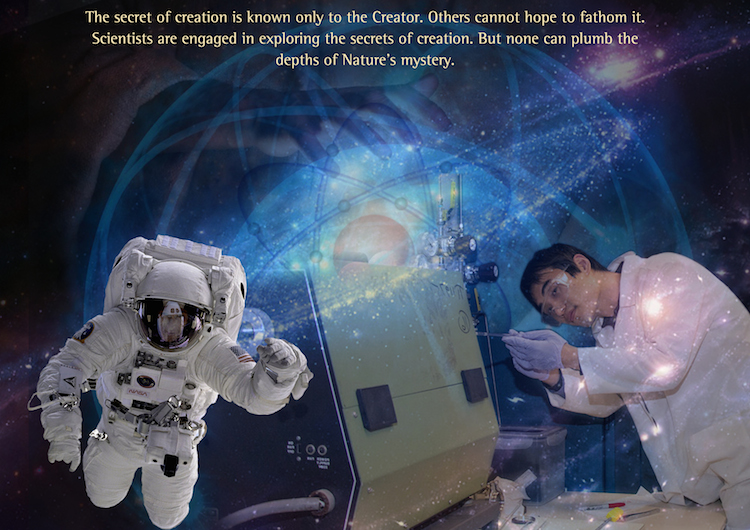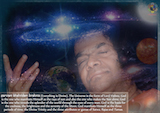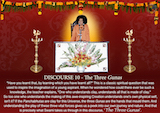|
|
| 'Like' us on Facebook | Follow us: |
Posted on: Aug 03, 2015
SUMMER SHOWERS 1990 ILLUSTRATED (Part 10)
SSI - 04.08.2015 |
 |
Bhagawan would often say, “My life is My Message.” A simple understanding of this declaration is that He lives every day the message He teaches. One other meaning one could draw is that, ‘His message is His life’! That is, the message that Bhagawan gave is the very life essence of His descent as an Avatar. And the fact that even today, we can go through the thousands of discourses He delivered is in itself a sign of His benediction upon us.
And among the discourses Baba delivered, those that He gave as part of the Summer Course series are even more special. This is because often these are a set of discourses centered around a specific theme, elaborated gradually. These are a treasure mine for any sincere spiritual seeker. So in our attempt to encourage more people to dwell deeply into these divine discourses, and contemplate on the message therein, we begin with prayers, a new series today.
In March 2013, with the same motive in mind we began a radio series entitled Shravanam Mananam Nididhyasanam. In this live show we began going through the 1990 Summer Course discourses, and needless to say we were overwhelmed by their profundity. So we now wish to offer these discourses to our readers, in this new format. We will try to pictorially depict the messages in these discourses in the form of a poster. These will be sent everyday to all our Sai Inspires subscribers as a link along with the Thought for the Day (If you are not a subscriber yet, please do subscribe). And after these posters are dispatched, they will be added to this page, on the right hand side. You can view, download and even print and use them if you so wish. Also given below is an abridged version of the discourse as published in the Summer Showers 1990 book.
We pray to Bhagawan to bless and guide this new endeavour of ours. And we invite you all to partake of and imbibe our Master’s ethereal message.
THE THREE GUNAS Students! Embodiments of Divine Love! The Divine shines in the rays of the Sun. It is the Divine that reveals to man through his eyes the vastness and glory of the world. The whiteness and coolness of the moon, which confer peace on men, are derived from the divine. The universe, which is based on the triple nature of time and which is sustained by the Trinity—Brahma, Vishnu and Maheswara—, is permeated by the Divine in the form of the three gunas—sathwa, rajas, and thamas. In short, everything in the Cosmos is indeed Brahman—Sarvam Khalvidam Brahma Nature presents a marvelous picture. No one can fully comprehend it. Whether it is blessing or bereavement, joy or sorrow, gain or loss, it comes from nature (prakruthi). Nature presides over the destinies of all creatures. This nature is comprised of the three gunas. The Trinity represent the three gunas. The three gunas account also for the processes of creation, sustenance, and dissolution—“sristhi, sthithi, and laya”. All the varied experiences in the world arise from the three gunas. Man should aspire not for a long life, but for a divine life. In the Cosmos, which is permeated by the divine, man should seek primarily to divinise or deify his life by transcending the three gunas The secret of creation is known only to the Creator. Others cannot hope to fathom it. Scientists are engaged in exploring the secrets of creation. But none can plumb the depths of Nature’s mystery. In scientific investigations, today’s discovery is superseded by tomorrow’s findings. That again becomes obsolete in its turn day-after-tomorrow. Continual change is in the very nature of creation. It is not permanent or immutable. The Creator is the only eternal, unchanging Reality. The spiritual path aims at investigating the nature of the Creator and ultimately becoming one with Him. The entire Cosmos consisting of living and inanimate objects is permeated by the three Gunas. Man should strive to understand the principle that transcends the three gunas. God is the embodiment of Atma. The terms like sathyam, jnanam, anantam, Brahma, Atma, Bhagavan, and God are synonyms. To start with, the pancha bhuthas—the five subtle elements of space, air, fire, water, and earth—emerged from the Atma. Each of the five subtle elements is constituted of the three gunas. Under the influence of these three gunas, the five subtle elements evolved into the five gross elements and the entire Cosmos, through the process of pancheekritam (fusion by permutation and combination). The Cosmos is permeated by the three gunas —sathwa, rajas, and thamas. At first, the nature of creation due to the sathwa guna has to be clearly understood. The antha karana—the inner instrument in men—represents the total sathwic quality of the five elements. Akasa (space) is the first among the five elements. From Akasa emerged what is known as suddha sathwa (pure sathwa). This accounts for the human form. The sathwic aspect of Akasa accounts also for the emergence of the organ of hearing, the ear. The second element is air. The skin is the product of the sathwic component of air. The eye is the organ representing the sathwic principle of the fire element. The individualised sathwic aspect of the fourth element, water, is the tongue. The nose represents the individualised sathwic aspect of the fifth element, the Earth. Thus, the sathwic components of these five elements account for the five faculties of sabda (sound), sparsa (touch), roopa (sight), rasa (taste), and gandha (smell). As each of these faculties has emerged from one particular element only, the five faculties are distinct in every person and perform different functions without any overlapping Akasa is represented by sound and the corresponding sense organ is the ear. The ear can only hear and not perform any other function. Likewise, the skin can only experience the sense of touch associated with Air. The eye, which is the organ associated with fire, can only see and do nothing else. The tongue, representing the element water, can only taste. The nose, representing the element Earth, can only smell but cannot taste. Thus each sense organ reflects in its functioning, the faculty of the one particular element from which it is evolved. While each of the sense organs is limited functionally to its specific role, the antha karana combines the functions of all five organs, because it is the cumulative product of all the five elements. This alone has the capacity to experience all the perceptions of the five senses—the five jnanendriyas. Are these organs of perception functioning externally or internally? The answer is that they perform a dual role—both internal and external. If only the physical organ, the ear, is present, but if the faculty of hearing is absent, the ear cannot hear. If the faculty of hearing is present, but there is no ear to receive sounds from the outside world, the faculty is of no use. It is the combined operation of the (jnanendriyas) external organs of perception and the corresponding invisible internal sense-centres in the brain that accounts for the functioning of the human personality. For example, if you want your voice to reach a vast audience, you should have the mike inside and the loudspeaker outside. Loudspeaker without mike or vice versa cannot serve the purpose. While the combined operation of the five elements in their sathwic aspect is seen in the antha karana, the collective functioning of the five elements in their rajasic aspect expresses itself as the life-force (prana). Among the five elements, in their individual expression of their rajasic quality, akasa is represented by the vaak (voice). Vayu finds expression in the hand. Agni expresses itself in its individualised rajo guna as the foot. The fourth and fifth elements, water and earth, find rajasic expression in the two excretory organs in the body. In this context, you must take note of some significant facts in the functioning of these elements. In its sathwic aspect, akasa expresses itself as ear. But the same akasa, in its rajasic aspect appears as the vaak (faculty of speech). It may be inferred from this that akasa has two children, the ear representing sathwa and the voice representing rajas. The ear, which is akasa’s first child, receives the sounds coming from outside. The second child, namely voice, sends its reaction from the inside to the outside, in the form of words. Likewise the skin is the first child of Vayu in its sathwic aspect. The second child, in its rajasic aspect, is the hand. For instance, the skin recognises an ant crawling on the body. Immediately the hand tries to remove it. It will be seen from these examples that the sathwic quality is concerned with receiving impressions from outside, while the rajasic quality is concerned with casting them out by way of reaction. In other words, the jnanendriyas originating from sathwa receive stimuli from outside and the karmendriyas derived from rajas respond to the stimuli. In the world today what is happening is the exact opposite. What is rajasic is being taken in and what is sathwic is being rejected. In the natural scheme of creation, what should be received is that which is sathwic and what should be rejected is all that is rajasic. The primary quality of Nature (Prakruthi) is sathwa. Prakruthi is called “Stri” made up of the three syllables—sa, ta, and ra. The significance of this term is: first of all, you have to take in what is sathwic, secondly ta implies developing some thamasik qualities, like submission, humility and modesty. ra, representing the rajo guna, implies that there are occasions in life when some firm resolutions and stern actions will have to be taken. The rajasic quality comes last, and it means that rajasic actions have to be done as a last resort when they are unavoidable. In the cosmic process, it is the sathwic quality—the “sa” kara or the syllable “sa” that comes first. Hence the duty of everyone to develop the sathwic quality in every aspect—in thoughts, attitudes, words, and deeds. The next aspect to be understood is that under the influence of thamo guna, the five subtle elements evolve themselves into the five gross elements by the process of panchee-kritam (fusion through permutation and combination.) This highly complicated process may be illustrated by the following example for purposes of easy understanding. Suppose the five elements come together as five individuals each having a one rupee coin. Now, each of them exchanges his one rupee coin for one-half rupee coin and four two-anna coins. A two-anna coin is equivalent to one-eighth of a rupee. Then, akasa retains half a rupee and distributes among the other four elements one-eighth of a rupee each. The second element, vayu, also does likewise and retains half a rupee for itself. Fire, water, and earth also follow the same procedure. As a result of this redistribution, each has one rupee, but its composition is affected by the exchanges among the elements, of parts of their respective nature. Originally each element was whole by itself. The process of mixing has resulted in the presence of all five elements in every “rupee”. This means that ultimately each element is composed of half of its original nature, the second half consisting of one-eighth of each of the other four elements. For example, the composition of earth will be 1/2 earth + 1/8th space + 1/8th air + 1/8th fire + 1/8th water. Similar will be the composition of the other four elements. In relation to the human being, the process of panchee-kritam makes man a mixture of the five elements and creates diversity from unity. These have been described in spiritual parlance as shodasa kalas (the sixteen aspects). What were these sixteen aspects? They are, the five jnanendriyas (organs of perception), the five karmendriyas (organs of action), the five elements, and the mind. Every man has these sixteen constituents, although the sixteen kalas are attributed only to the Divine. The implication is that man has to realise his divinity. Today man’s desire for worldly pleasures has exceeded all limits, and what is more, he wants quick fulfillment of his innumerable desires, by resorting to short cuts. But he must realise that short cuts are always dangerous and riddled with thorns, stones, etc. The highway is always preferable, though it may seem longer. The ways of the Divine are not easy to comprehend. Wishing the welfare of everyone in the universe, the Divine uses a myriad of methods. It may be illustrated by the story of a devotee aspiring for riches, who performed a severe penance for securing a boon from the Goddess of Wealth, Lakshmi. Man is prepared to undergo any ordeal for achieving material wealth but will not take any trouble to realise the Divine. Lakshmi appeared before the devotee and asked him what he wanted. He replied that he wanted Lakshmi Herself. She agreed and said that adorning Herself with all ornaments, She would follow him and asked him to go ahead. She said she would come to his house and hand over all her ornaments to him. She imposed, however, one stipulation. “You must go ahead of me and never look back. If you look back, I will stay back at the spot.” Filled with joy, the devotee strode ahead toward his home. The Goddess’s jewels were making all kinds of sounds as She walked behind. Unable to restrain his curiosity to find out what were all the jewels she was wearing, he turned back to have a look at her. He could not repress his desire till he reached home. The moment he looked back, Lakshmi stopped there and did not follow him. This is what happens when one cannot control one’s desire. Even though he got the grace of the Divine, the devotee could not benefit from it. This means that even if you are blessed with an abundance of divine grace, you must acquire the capacity to benefit from it. To get this capacity, you have to obey implicitly the injunctions of the Divine. If the devotee in the story had adhered to Lakshmi’s conditions, he would have benefited from her bounty. Failing to abide by her conditions, he forfeited what he had been offered. The situation in the world is something similar to this. The world is permeated by the potency of the three gunas. Even our vision of the world is influenced by the three gunas. Examine your eye. The outer rim of the eye is red, representing the rajo guna. After that, you have the white area, representing sathwa. At the centre is the black circular cornea, representing the thamo guna. Thus even our vision is tainted by the three colours, red, white, and black representing the three gunas. When you pose the question, “Where is God?” the answer is given by nature herself. The revolution of the Earth on its own axis at the speed of 1000 miles per hour accounts for the phenomenon of night and day. The earth’s rotation round the Sun at a speed of 66,000 miles an hour accounts for the various seasons, for rainfall, and for the cultivation of food crops. Thus the divinely-ordained motions of the earth enable living beings to get their food. This is a visible proof of the existence of God. The scriptures declare that the foolish person, even while seeing the acts of God, declares he has not seen God. He does not realise that Nature is the vesture of God. What is the lesson to be learnt from the observance of Nature? It is “Kriyaseelata (being always active in the performance of one’s duty).” It is because Nature ceaselessly performs its duty that the world is able to derive so many benefits. The secret and mystery of creation lies in the due performance of one’s duty with earnestness and sincerity. In the pursuit of the mirage of sensual happiness, men are going on the wrong path. This can be seen in the life-style of people going to work, or carrying on business. After what they consider as a day of hard work, they go to clubs, where they become slaves of drink and ultimately ruin themselves, because: First the man drinks the wine,
Real happiness can be got only by rendering service to the public. Go to the help of the poor and the forlorn. You will derive strength as well as peace from such service. Your conscience also will feel satisfied. It is a pity that neither the rich among the public nor the administrators are inclined to do such service. It is all the more essential that students should have some ideals before them and look forward to serving society selflessly. You should realise that you are a part of society and that your welfare is bound up with the good of the society as a whole. You should utilise your knowledge and skill for the benefit of society, duly recognising the fact that “Knowledge without action is useless, and action without knowledge is foolish.” Whatever sadhana (spiritual exercise) you may or may not do, your primary concern must be to develop the love of God. When you develop that pure love, you can achieve anything. In this context, the advice which Hanuman gave to Vibhishana when the latter lamented that though he had been chanting the name of Rama since long, he had not had the benefit of a vision of Rama, is relevant. Hanuman told Vibhishana that it was not enough to merely chant the name. One should also engage himself in the service of the Divine. Hanuman declared that while meditating on the name of Rama, he was also engaged in constant service to the Lord. That was how he had earned Rama’s grace and become near and dear to Him. On another occasion, Vibhishana complained to Hanuman, saying, “My dear friend, I am in the midst of cruel rakshasas (demons), just like the soft tongue which is surrounded by the sharp teeth. Hence I am unable to calmly concentrate on Rama.” Hanuman promptly replied, “My dear Vibhishana! Do not be worried on that account. In old age the teeth fall away but the tongue remains in tact. Likewise the demons will be destroyed in due course like the teeth, and you will remain safe like the tongue. So be happy.” That is why Vibhishana used to praise Hanuman as Gunavantha (highly virtuous), Balavantha (extremely strong and powerful), and Saantha (always calm and peaceful. Remember that like Hanuman, you too can derive strength and peace only through love and service, together with control of the senses. The young student Prahalada told his father, Hiranyakasipu, “You have conquered all the worlds in a trice, but you are unable to control your senses. How can you call yourself a ruler, when you are yourself ruled by your senses?” So, students should strive to control their senses, and develop love of God, fear of sin, and morality in society. |
- Team Radio Sai
What do you think about this series? Please let us know by writing in to h2h@radiosai.org. Do not forget to mention your name and country.


